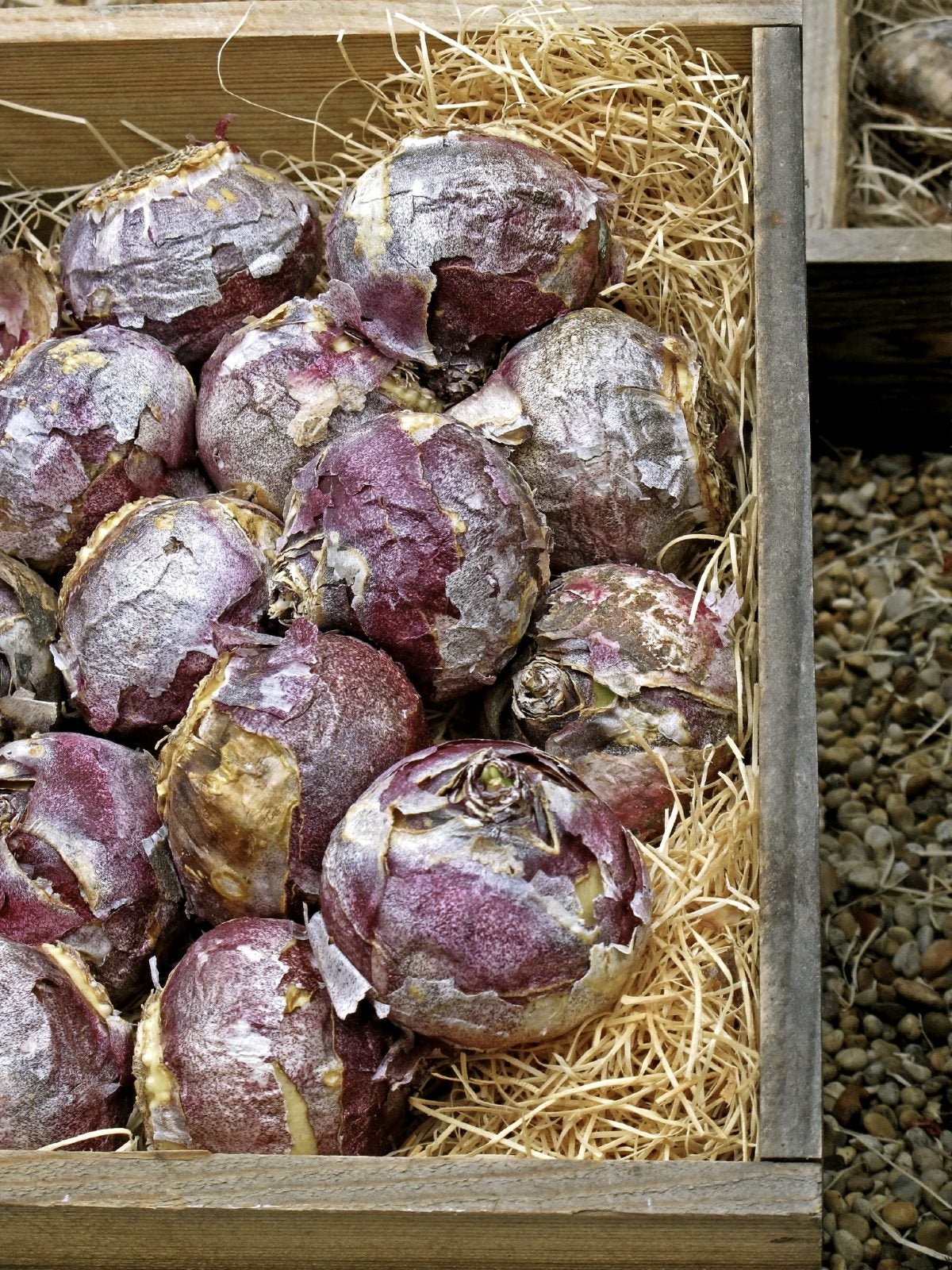Curing Hyacinths: When To Dig Up Hyacinth Bulbs For Storing


A potted hyacinth is one of the most popular spring gifts. When its bulbs are forced, it can bloom heartily on your dining room table when ground outside is still covered in snow, providing a very welcome promise of spring to come. Once that hyacinth has bloomed, however, don’t throw it away! With just a little effort, you can turn that one-time gift into a staple of your house or garden that will bloom year after year. Keep reading to learn about hyacinth bulb curing and storing hyacinth bulbs.
When to Dig Up Hyacinth Bulbs for Storing
It’s important not to dig up your hyacinth bulbs at the wrong time, or else your bulbs may not have enough energy to sprout. Once the blooms have passed, cut off the blossom stalk to keep the plant from wasting energy on seed production. Keep the leaves and continue to water them as usual-- the leaves are essential for storing up energy in the bulb. When the leaves start to brown, reduce your watering by half. Only when the leaves have died completely should you stop watering. When the soil has dried out, carefully dig up the bulb and remove the dead foliage. Curing hyacinths is very easy. Lay the bulbs out on a newspaper in a cool, dark place for three days. After that, store them in a cool, dark location in a mesh bag. They’re now ready to be planted in your garden in the autumn or forced indoors in late winter.
How to Cure Hyacinth Bulbs
If your hyacinths are growing outdoors, there’s no real reason to dig them up and cure them-- they’ll come back naturally in the spring. However, if you want to move them to a new spot, there’s no reason you can’t. While your hyacinths are still above ground, mark their exact spot with a stake-- once they die back, it will be very hard to find the bulbs. In autumn, carefully dig up the bulbs and lay them out on newspaper, then store them in a mesh bag. The process of curing hyacinths is just the same as with forced bulbs. They’re now ready to plant or force as you choose.
Sign up for the Gardening Know How newsletter today and receive a free copy of our e-book "How to Grow Delicious Tomatoes".

The only child of a horticulturist and an English teacher, Liz Baessler was destined to become a gardening editor. She has been with Gardening Know how since 2015, and a Senior Editor since 2020. She holds a BA in English from Brandeis University and an MA in English from the University of Geneva, Switzerland. After years of gardening in containers and community garden plots, she finally has a backyard of her own, which she is systematically filling with vegetables and flowers.